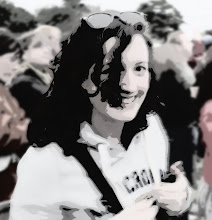OK, I'm getting my head around the coding and I'm back!
Brainstorming sessions began the week, and I put the finishing touches on a few scenarios that users might have. Over the weekend I mapped the software and did up some concepts on Photoshop.
Scenarios
Scenarios are used to see if the features of the software will meet the goals of the user. They help the designer understand the user and the goals they have by looking at the UI from the users perspective. Scenarios help the designer focus on the design and away from the technical details.
To write an effective scenario the designer needs to understand the task supported by the system, and what is needed by the system. Scenarios allow the context of use to be explored. They can help anticipate how the system might be used, the users motivations, actions and reactions. Scenarios are important in the design process as all people involved in the final product can understand and give feedback on the system.
Considerations when writing one up:
- Scenarios should be based on prior knowledge or 'best guess'
- Simple language should be used
- Do not get distracted by technology
- Discuss all steps of interaction with the system
Important aspects of a scenarios from Mobile Interaction Design
- Setting - introduction to the scenario
- Actors - persona/user
- Goals/Objectives - what the actor wants to do
- Actions/Events - detailed steps in achieving the goal
Scenarios are used to make sense of the field work that I have done. When writing up the scenarios I used information I gathered from interviews and observations. I developed the personas of tourists, families, couples, the interested visitors and the bored. From this I got a clearer picture of how the interface of a navigational aid should work and look to the user.
Storyboards
After scenario building I will be drawing up storyboards.
Storyboards should be used with the scenarios as a tool to visualise the interaction with a system. They help the designer and team how the system will be used in the in a real context, as described in The Value of Storyboards in the Product Design Process. Storyboards help the exploration of the system and to define requirements.
Scenarios and storyboards should be used together. In Form Feeds Function scenarios are described as the plot to a film, while the storyboard is the script. The storyboards can help develop the scenario and communicate the design more clearly.
From here I mapped out how I want the system to be structured (once I get my hands on a scanner I will put this up). The organisation of content within the application is especially important. The UI has to be organised and labelled in a manner the user will understand, and give the user information on what step to make next so they can complete their goal. The user should be eased in to the interface so they can complete their goals in a simple manner. One way to do this is begin an interface that has become familier to most users. Most users are used to and can learn interfaces that are similar quickly.
When designing the structure the type of application and its uses should be considered. The interface should match the Mental Model of the user. As the application will be on a smartphone I will have considered how well the user interacts with this device.
Next, I considered the applications physical structure and how I want all its features to appear to user and connect with each other. A huge emphasis has been placed on the navigation through the device, though I will need to do some prototype testing with others to gain a full knowledge on if the overall structure works.

0 comments:
Post a Comment